How to use a Siemens dishwasher
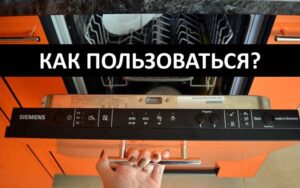 The quality of cleaning dishes in a dishwasher depends not only on the capabilities of the device. Much of the outcome is determined by how the user approaches the process. If you figure out in advance how to load the PMM correctly, what products need to be used, what program to run, then the washing will be as effective as possible. Let's look into the nuances.
The quality of cleaning dishes in a dishwasher depends not only on the capabilities of the device. Much of the outcome is determined by how the user approaches the process. If you figure out in advance how to load the PMM correctly, what products need to be used, what program to run, then the washing will be as effective as possible. Let's look into the nuances.
Initial activation and water quality
All information on how to use a Siemens dishwasher is in the equipment instructions. Therefore, after purchasing the device, be sure to read the included manual. All processes are described there - from installing the PMM to the first start-up of the equipment.
Each Siemens PMM model has its own nuances - these are what is discussed in the user manual. If you bought a used dishwasher and lost the instructions, all the information can be easily found on the Internet. By following the manufacturer's recommendations, you can extend the life of the device.
It is better to entrust the connection of the machine to communications to a specialist. Sometimes stores will void the warranty if the dishwasher is installed by non-professionals. The specialist will correctly connect the PMM to the water supply and sewerage systems and adjust the device according to the level.
Select models of Siemens dishwashers can be connected to the Home Connect mobile application for ease of control.
Before using the dishwasher for the first time, be sure to adjust the softener. The water in most regions of Russia is hard - and this negatively affects the condition of the PMM. To minimize the negative impact on the machine, it is necessary to use special salt.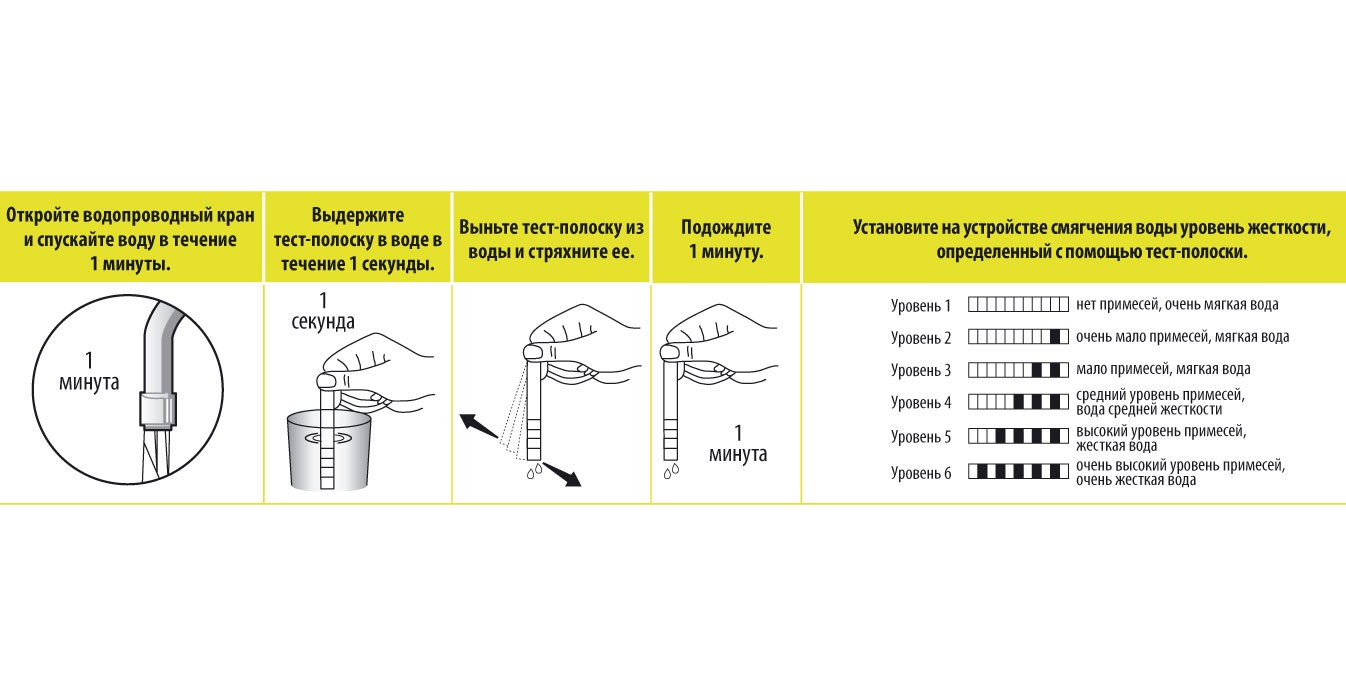
The Siemens PMM comes with a test strip for determining water hardness.If the indicator is higher than normal, the softener is adjusted - it is moved to the required position. Before starting the machine for the first time, dishwasher salt is poured into a container located at the bottom of the washing chamber.
Arrangement of objects inside the PMM
The washing result greatly depends on how correctly the dishes are loaded into the machine. There are certain guidelines for arranging plates, cups, forks, spoons, pots and pans in baskets. If they are violated, the efficiency of the cycle will be low. In this case, you don’t have to blame the machine, but only yourself.
Modern Siemens PMMs are equipped with an upper and lower basket, as well as a separate tray for forks/spoons/knives.
The top crust is designed for small dishes:
- mugs;
- coffee cups;
- glasses;
- gravy boats;
- saucers;
- wine glasses.
In some Siemens models, the position of the upper basket can be adjusted. This is convenient when you need to load bulky items down. Adjusting the height of the tray is very simple - you just need to place it on other guides.
You need to load the following into the lower basket:
- serving plates;
- pots;
- stewpans;
- baking sheets;
- frying pans;
- lids and other large items.
For most Siemens models, the lower trays are equipped with folding holders. When raised, they help distribute cutlery evenly. If very large items are loaded, the clamps can be folded, creating a flat platform for large items.
A separate small tray is intended for cutlery. Knives, forks, spoons are placed in it. Some Siemens models also have an additional aluminum basket for silverware.
Manufacturers, as well as experienced PMM users, give some recommendations regarding loading dishes into the “home assistant”. Let's look at the most valuable tips.
- Before placing dishes in the hopper, be sure to clean off any remaining food, fruit seeds, or napkins. Remove the tea leaves and tea bags from the mugs. This will prevent clogging of the PMM drain system.
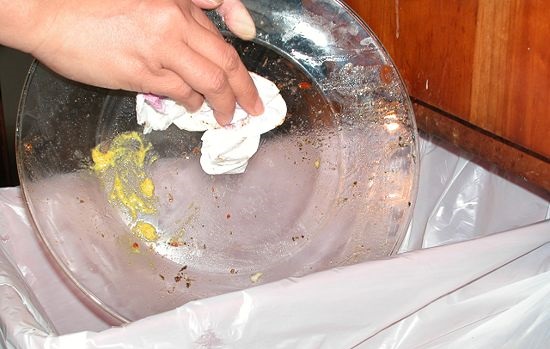
- To improve the quality of washing and also reduce energy consumption, rinse especially dirty, greasy, “burnt” dishes with hot water before loading them into the machine. This way you will help the PMM cope with cleaning faster. This advice is especially relevant for owners of dishwashers that do not have a pre-soak program.
- Fill the lower basket first, then the upper, then the cutlery tray.
- Plates must be placed with the inside facing the center of the basket. The larger the item, the closer to the edge of the tray it should be placed.
- When placing plates and saucers in holders, leave a gap between the items. If they are close to each other, they will not be washed properly.
- Deep items (mugs, pots, salad bowls) are placed bottom up so that water does not collect in them.
- It is important to place fragile dishes (crystal objects, thin glass goblets, etc.) so that they do not touch. Otherwise, there is a risk of damage to the products during the washing process.
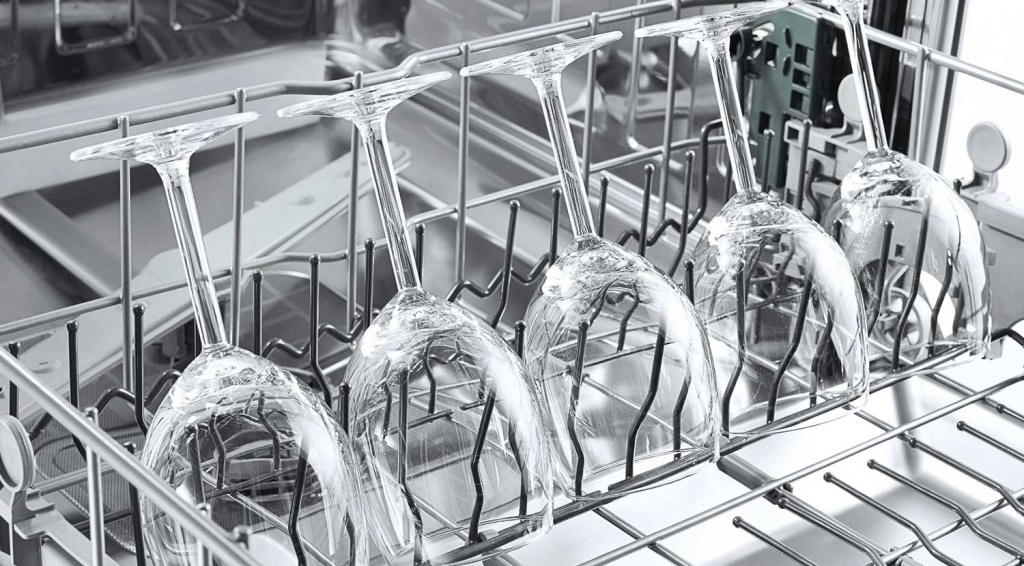
- Spoons, forks and knives must be placed in the tray with the handle down. This will allow water to drain better from the appliances.
- Dishes with recesses must be placed at an angle so that water can flow out of the recesses smoothly.
- It is advisable to wash very dirty dishes (pans, baking sheets, burnt pots) separately from relatively clean plates and mugs.
- The baking sheets must be placed sideways in the lower basket so that they do not impede the circulation of water in the chamber.
- Do not overload the PMM. Firstly, it is harmful to the technology itself. Secondly, electricity consumption increases. Thirdly, the quality of washing deteriorates - the dishes remain dirty. It is better to run two cycles than to fill the machine to capacity.
- When loading dishes, make sure that they do not interfere with the rotation of the PMM rocker arms.
Be sure to remember that you cannot put the following in the dishwasher:
- cutlery with wooden, porcelain and mother-of-pearl handles;
- products made of non-heat-resistant plastic;
- tin and copper utensils;
- thin crystal;
- wooden utensils (cutting boards, mugs).
The washing result largely depends on the proper layout of the dishes. If you follow all the recommendations, there will be no problems with the quality of cleaning. Another important nuance is the selection of detergents.
Detergent and rinse aid
Today there is a huge variety of special household chemicals for dishwashers on the market. Therefore, choosing a detergent becomes a difficult task for PMM owners. Which manufacturer to choose will depend on the capabilities and desires of the user.
There is one important nuance. Only special detergents can be used for dishwashers. Do not load dishwashing gels, liquid soaps, or similar compounds into the appliance.
Constant use of “alternative” means will lead to machine failure. Excessive foaming will cause air pockets to appear in the PMM circulation pump. This will stop the flow of water to the sprinklers.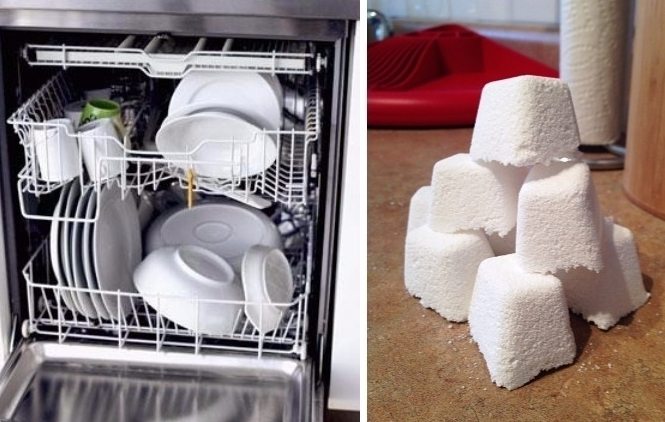
To wash dishes in a machine, you can buy special tablets, powder or gel.All three forms of the product are acceptable for use in Siemens dishwashers. Each option has its own advantages and disadvantages.
The tablets are very convenient to dose. One capsule is needed to fully load. They also have notches for breaking, in case there are not enough dishes in the machine.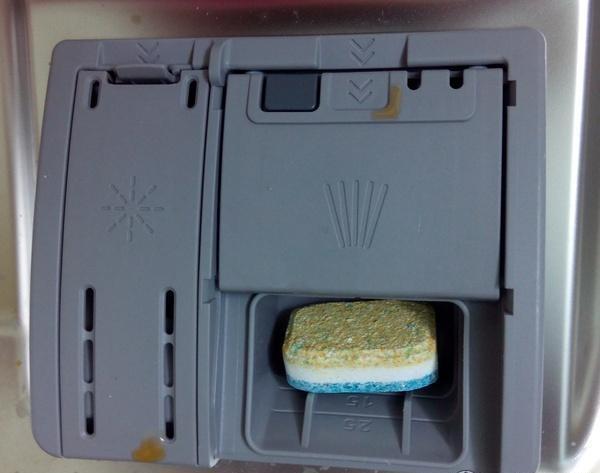
Tablets are not recommended for short cycles. They just don't have time to dissolve. Also, their disadvantage is their higher cost compared to powder or gel.
On sale you can find tablets for dishwashers 3 in 1 and 5 in 1.
Each layer of the multifunctional tablet performs its own functions:
- the first – provides high-quality dishwashing;
- the second – performs the function of a rinse aid;
- the third – softens the water;
- the fourth – cleanses the “insides” of the dishwasher from fatty deposits;
- fifth - adds shine to stainless steel.
If the tap water is too hard, then the amount of salt in the tablets will not be enough; the granules will still have to be added additionally. Many users still come to the conclusion that it is more convenient to use each supplement separately, and there is no point in overpaying for multifunctional capsules.
As for the powder, it is dosed using a measuring spoon. When the machine is half loaded, it is easy to pour half as many granules into the dispenser. Suitable for use on short programs. It is cheaper than tablets, but it is not as convenient to store as capsules.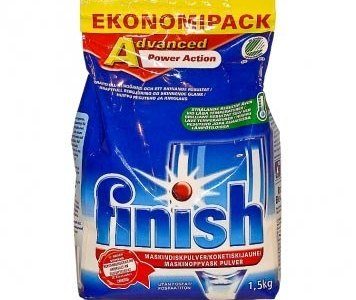
In addition to detergent, you must use rinse aid. It creates an invisible thin protective film on dishes, prevents the appearance of stains on items, and ensures their faster drying.
Thanks to the rinse aid, crystal and glassware are stain-free. The composition is inexpensive.The liquid is poured into a separate compartment, which is located next to the detergent dispenser.
To care for PMM, a special cleaner is required. It is recommended to use it once every 2-3 months. Typically the packaging is designed for one use. You can pay attention to products from the brands Finish, Somat, Lotta.
Which washing program should I choose?
For the first time, the PMM is started without dishes in the chamber in intensive mode. The test cycle is necessary to wash the inside of the machine from factory dirt. Also, during the program, observe the operation of the dishwasher - whether it is leaking or how it heats the water.
The set of programs on different Siemens models differs. A description of all algorithms is in the equipment instructions. It is necessary to choose a mode suitable for the type of dishes and the degree of soiling.
- Soak. The program is intended for “burnt” pans and pots, as well as dishes that have been lying in the sink for a long time and have “dried out”. The machine will soak off all dried-on dirt and then proceed to the main mode.
- Intensive The program is designed for cleaning heavily soiled items (pans, pots, baking trays). Includes two stages: preliminary and main washing. The water temperature reaches 80 degrees. The dishwasher in this mode does not save either water or kilowatts, so you need to run it only in difficult cases.
- Standard. Mode for cleaning dishes with medium degree of soil. Also suitable for washing “fresh” pots and pans. The cycle temperature is within 60-65°C. The duration of the program is about one and a half hours.
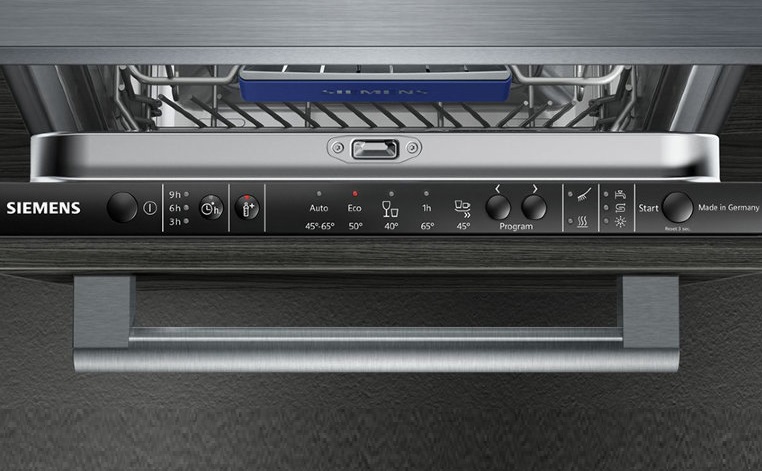
- ECO. The mode chosen by thrifty housewives. Electricity consumption for this program is minimal. The water warms up to 50-55 degrees. The duration of the algorithm is approximately 2.5 hours.
- Half load. Another economical mode. Suitable for daily use when there are not too many dishes accumulated. This program is characterized by reduced water and electricity consumption, as well as a short duration.
- Quick wash. Express mode is designed for lightly soiled dishes. The water warms up to 55 degrees, the cycle lasts about 50 minutes. Not suitable for cleaning pots and pans.
- Delicate. A program for the care of fragile dishes that require careful cleaning. Suitable for washing porcelain, crystal, thin glass. The water warms up to 40-45 degrees. You need to keep in mind that “bathing” in a cool liquid will not get rid of heavy dirt, so the mode will only be good for “semi-clean” items.
To start the washer, connect the machine to an outlet. The mode is selected using a special button. Having selected the desired program, press the “Start” key.
On some Siemens models, additional functions can be connected to the main program:
- "Saving time";
- "Hygienic washing";
- "Drying";
- “Delayed start”, etc.
On Siemens dishwashers, changing the program after the cycle has started is not possible. You can only forcefully turn off the machine and then select the desired mode again. The PMM notifies you of the end of its work with a sound signal and a flashing indicator.
Interesting:
Reader comments
- Share your opinion - leave a comment






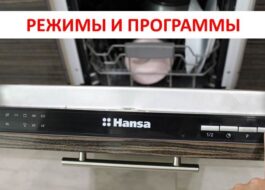














Add a comment